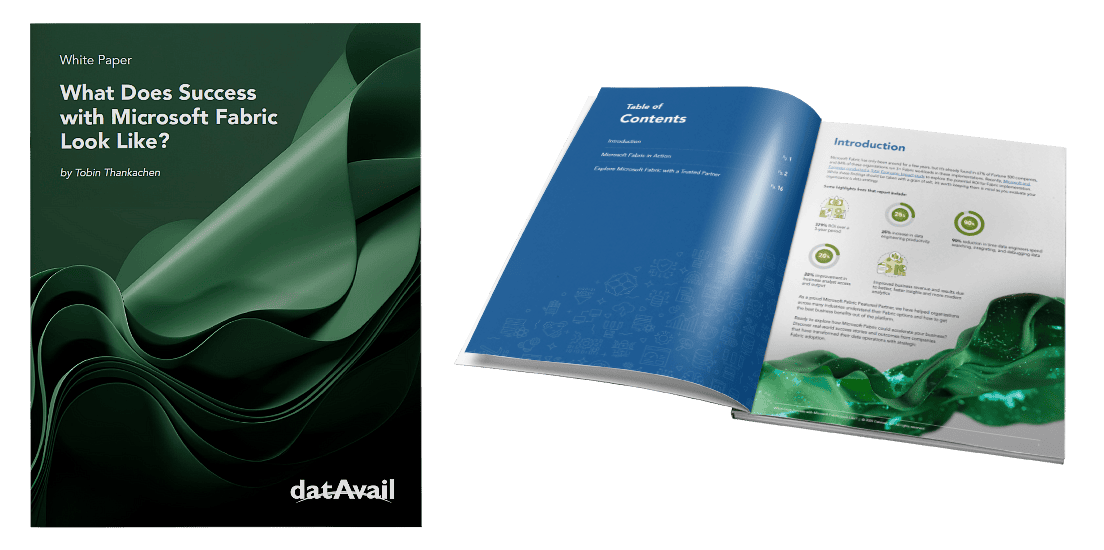What Does Success with Microsoft Fabric Look Like?

7 Real-World Implementations
As data volumes explode and business demands for real-time insights intensify, IT leaders face a critical decision: how to modernize analytics infrastructure without disrupting operations or exceeding budgets. This white paper reveals seven real-world Microsoft Fabric implementations that delivered measurable business impact, providing the strategic roadmap and ROI framework you need to evaluate your next data platform investment.
Key Takeaways
- Proven migration and modernization strategies that minimize business disruption while maximizing platform value across diverse industries
- Real-world case studies from Fortune 500 companies spanning energy, manufacturing, professional services, healthcare, and automotive sectors
- Multiple Microsoft Fabric migration use cases, with patterns that include migrations from Oracle database, Azure Synapse, Power BI, Azure Data Factory, Amazon Redshift, and Amazon QuickSight
- Strategic implementation frameworks for unifying fragmented data systems and eliminating costly “midnight gymnastics” from system failures
- Expert recommendations on Microsoft Fabric readiness assessment, capacity planning, and governance best practices that ensure long-term success
Sneak Peek: Real Microsoft Fabric Business Impacts in Action
Datavail helped one energy infrastructure company achieved a 30% improvement in data reliability across 26 business units while boosting analytics capabilities by 15-20%. Meanwhile, a manufacturing leader cut data processing time from days to hours, enabling real-time decision-making instead of 24-hour delays during critical production issues.
Download the full white paper to accelerate your Microsoft Fabric success.
FAQ: Microsoft Fabric Implementation
How long does a typical Microsoft Fabric implementation take?
What role does data play in supporting AI/ML initiatives in insurance?
What ROI can organizations expect from Microsoft Fabric adoption?
What are the biggest challenges organizations face during Microsoft Fabric migration?
What skills and resources are required for Microsoft Fabric success?
Download the White Paper